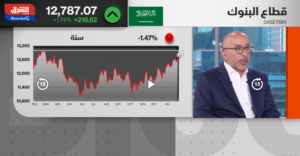With cryptocurrencies, it will be a long time before speculation is ironed out
There needs to be a lot more convincing left to do to get a real investor buy-in
The South Sea Company opened for business in 1711, but never managed to do the work implied by its name, which was shipping goods and slaves. Instead, its directors attempted at a vastly more ambitious project- one that would, if it worked, solve Britain’s problem of borrowing once and for all.
They proposed a heroic attempt at what we would now call ‘financial engineering’ – taking the whole of the national debt and turning it into shares of a private company, which would be traded on the stock exchange. In its partisan view, this would be the savings of the nation. For critics, it was to “stock job the nation”- a public necessity that would be transformed into a form that could be manipulated for private profit.
Catching all investors’ attention
By 1720, half of Europe had heard about and bought into its scheme, but that it would end in tears was inevitable- for almost everyone it would end in ruin. Even the most straightforward accounts of the bubble mention the breathtaking scope of ambition, intertwined with advances in science and technology to describe how the public at large bought into the scheme. Similar narratives are now starting to be written about the ‘crypto winter’, a universe of more than 19,000 crypto “currencies” (by way of comparison, there are 180 fiat currencies in the world) that have lost a cumulative value of more than $2 trillion in value since the beginning of this year.
Defendants of these assets point to the underlying advancement of technology and the increased rate of adoption as an explanation for why this asset class will continue to endure, even grow. In propagating this claim, they point to the history of scientific revolutions, which is usually told as a sequence of discoveries that act as disruptors.
This picture leaves out a central human fact: those who solved problems of physics or math did not confine themselves to natural philosophy. From the very outset, they used the same methods of habits and mind to tackle human questions of how to create value and how to store them. In 1719, on the brink of the wild ride to come, Sir Isaac Newton, who was master of the Royal Mint and the creator of ‘real’ money, veered off course when he subscribed wholeheartedly into the South Sea Company.
Experts weigh in
Likewise, the advent of the crypto boom attracted a plethora of experts, most of whom, guided the ‘masters of the universe’ and the retail public at large on how to think about the concept of money and how it could be expanded using the tools of technology.
Technology, however, often clashes with the motives and the interests of national governments and pits it against those of the financial elite. Recent warnings by the Chinese government have echoed sentiments of central bankers throughout the globe that crypto assets are at best wildly speculative and add to, rather than hedge, financial market volatility.
Studies conducted out of elite universities in America show that crypto assets are positively correlated with technology stocks, and negatively correlated to interest rates and inflation; the very antithesis of the problem that they were attempting to solve.
Take a step back and the catastrophe now known as the South Sea Bubble is eerily familiar to the narrative in the crypto space. The South Sea Bubble was the first and in many ways the archetypal financial market crash, replete with naivete, despite all the hullabaloo. How the British government responded subsequently catalogued and uncovered a breathtaking guide of corruption and greed and all the ways it is possible to subvert the market for private gain.
This may not be how the tale ends for crypto assets, (one certainly hope that it doesn’t), but we would ignore the parallels of unsustainable financial adventures at our peril.





